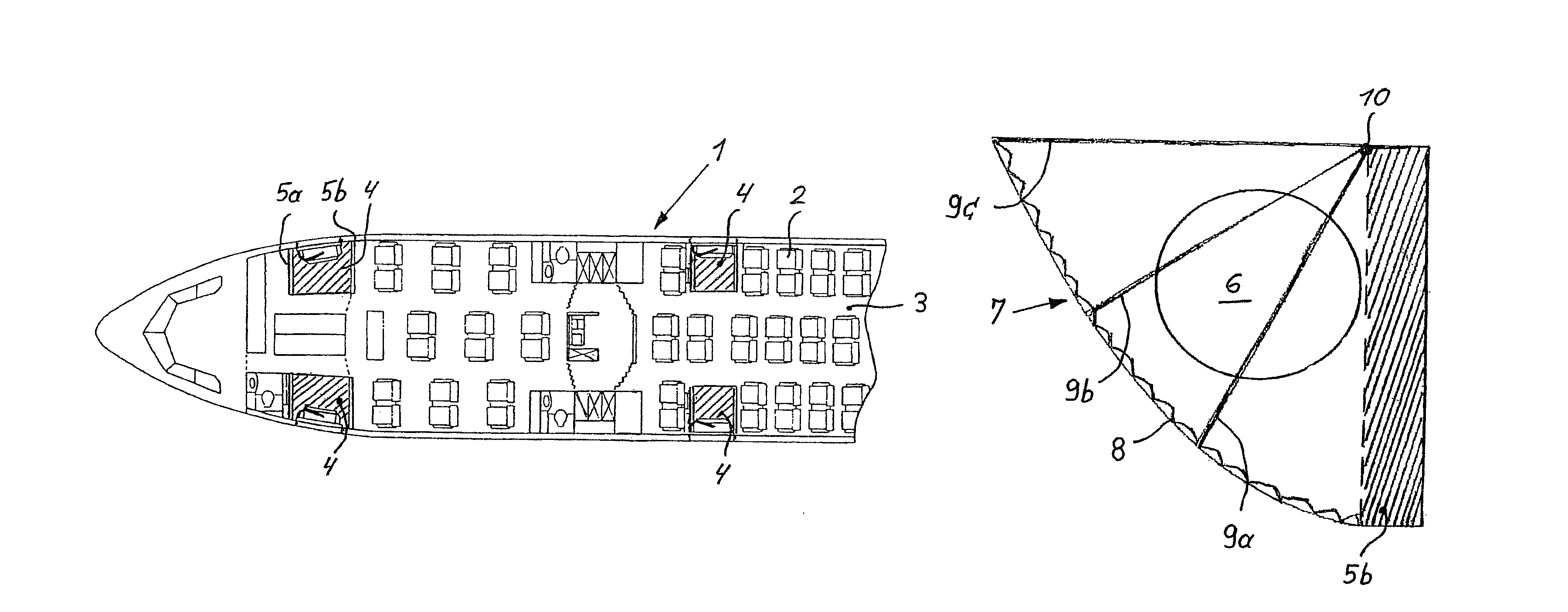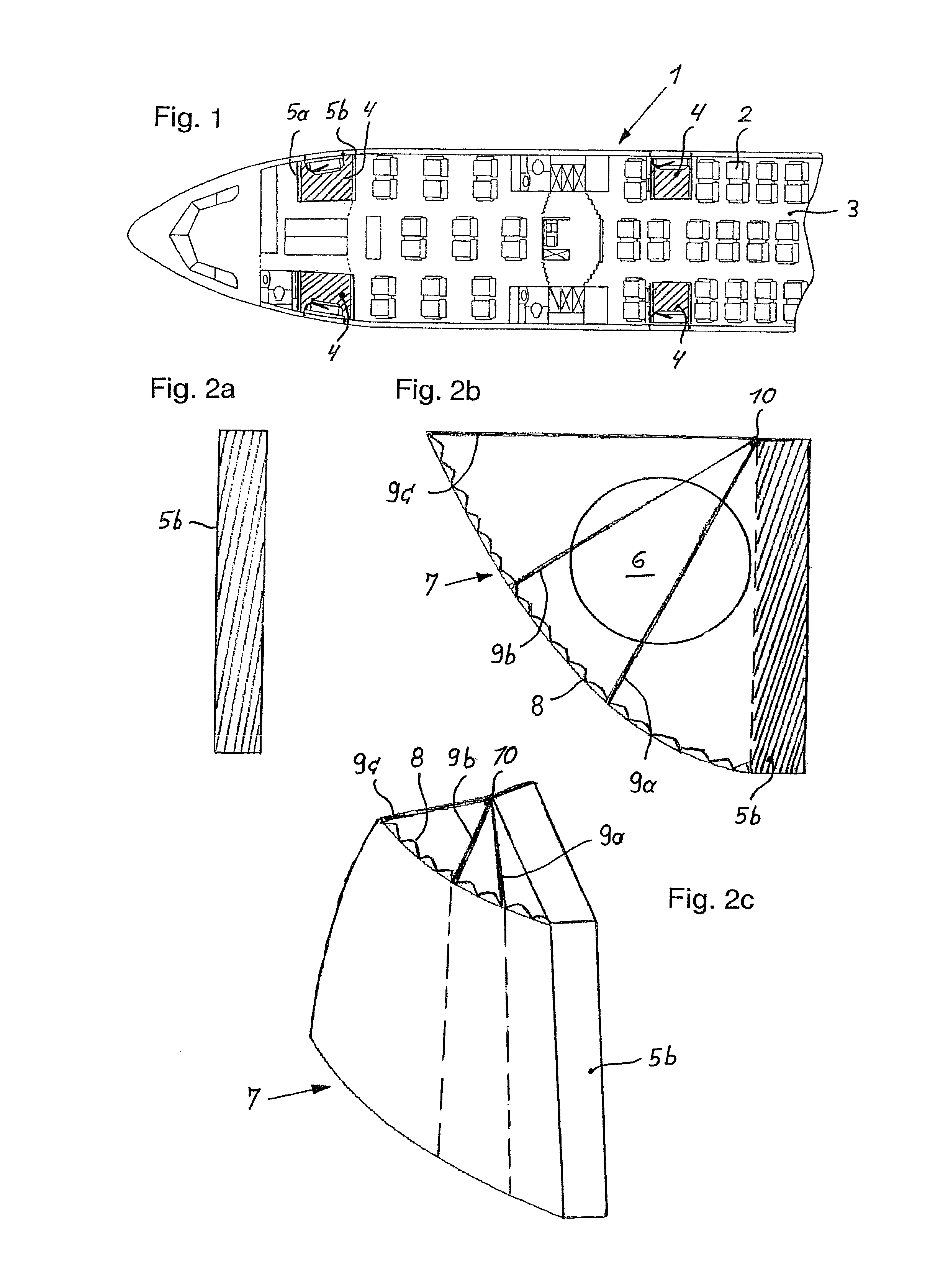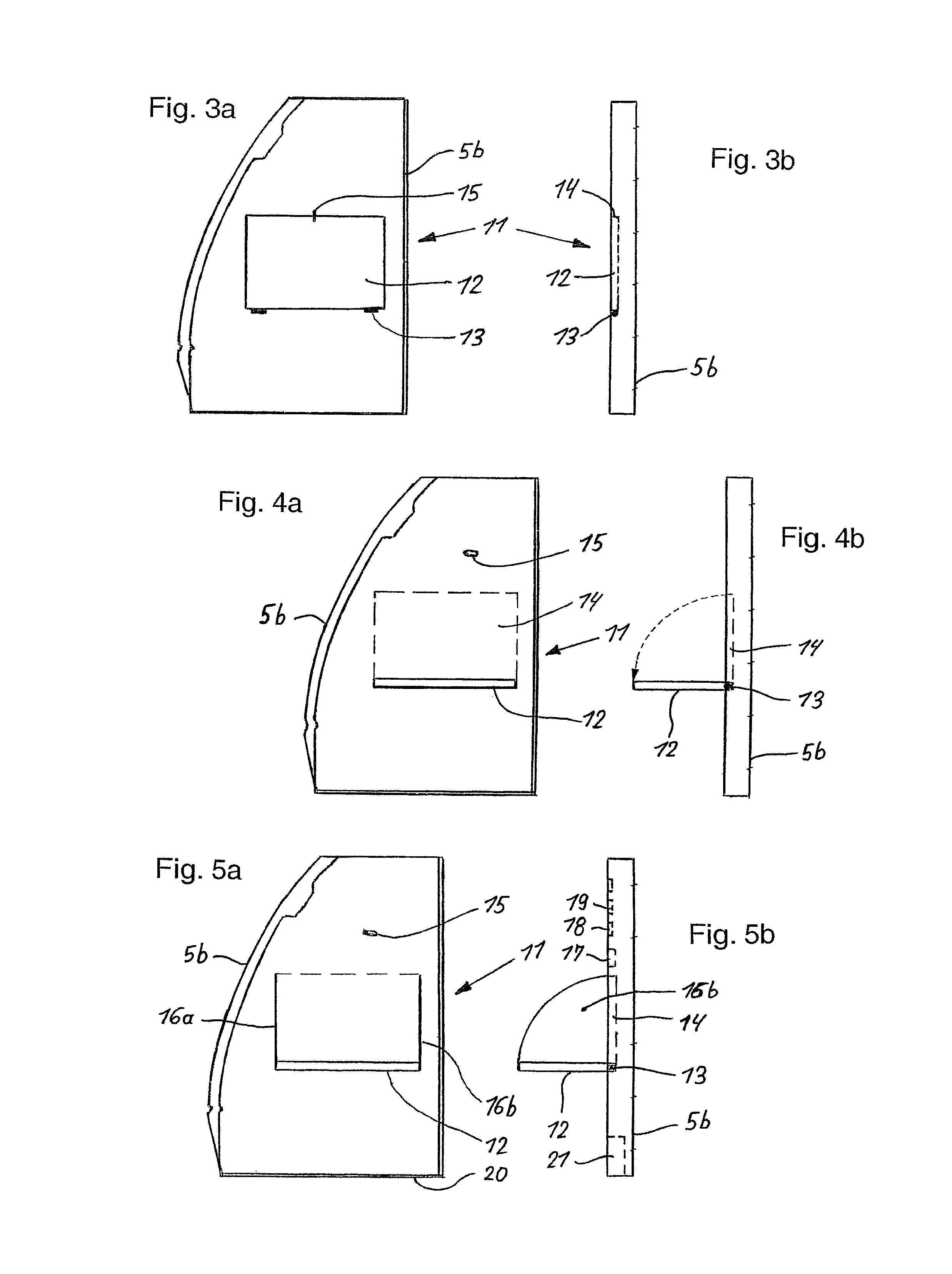Disposition zone in an aircraft passenger cabin
a technology for disposing zones and passenger cabins, which is applied in the field of disposing zones in aircraft passenger cabins, can solve the problems of reducing the passenger space of the module, affecting the service life of passengers, and affecting the work efficiency of passengers in business class, so as to improve the services and comfort offered to passengers
- Summary
- Abstract
- Description
- Claims
- Application Information
AI Technical Summary
Benefits of technology
Problems solved by technology
Method used
Image
Examples
Embodiment Construction
[0049]In the description of FIGS. 1 to 11d, analogous or corresponding components and elements are at least in part identified by the same reference symbols. Furthermore, the uniform term space unit is used for the door entry area and door exit area of the passenger cabin.
[0050]FIG. 1 shows the design of a section of an aircraft 1 in the form of a sectional representation and elucidates the seat layout of passenger seats 2 in a passenger cabin 3, as well as the arrangement or distribution of the door entry and door exit areas that are referred to as space units 4 and respectively illustrated in a hatched fashion. According to the invention, the space units 4 form disposition zones that can be used for different service and / or comfort facilities and also referred to as Working Areas. In this case, the space units 4 are laterally bounded by partition walls 5a, 5b that extend from a cabin floor up to a cabin ceiling.
[0051]FIGS. 2a to 2c show the design and the arrangement of a calling ...
PUM
 Login to View More
Login to View More Abstract
Description
Claims
Application Information
 Login to View More
Login to View More - R&D
- Intellectual Property
- Life Sciences
- Materials
- Tech Scout
- Unparalleled Data Quality
- Higher Quality Content
- 60% Fewer Hallucinations
Browse by: Latest US Patents, China's latest patents, Technical Efficacy Thesaurus, Application Domain, Technology Topic, Popular Technical Reports.
© 2025 PatSnap. All rights reserved.Legal|Privacy policy|Modern Slavery Act Transparency Statement|Sitemap|About US| Contact US: help@patsnap.com



